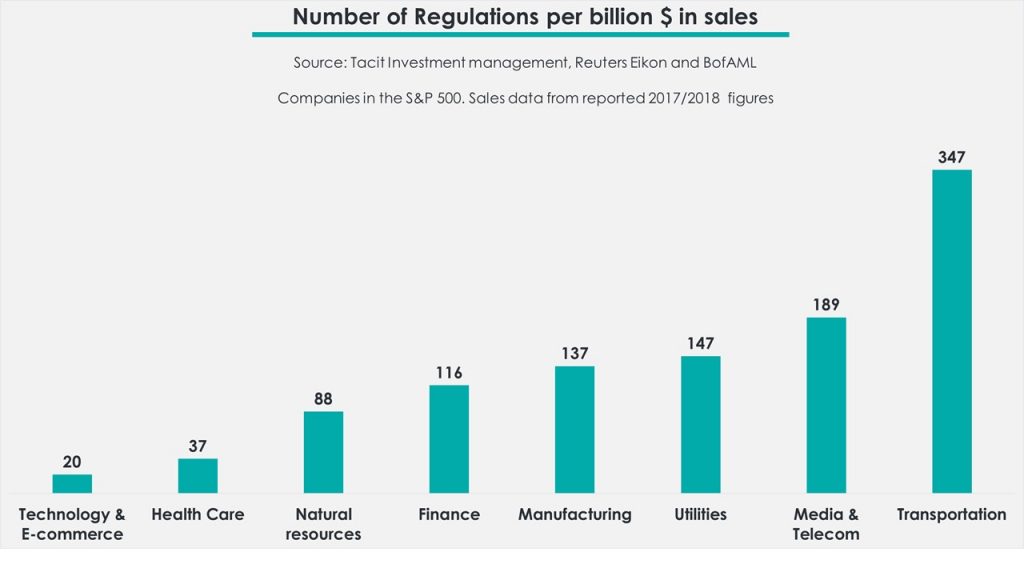Share this post
Regulation & the Attention Economy
May, 2018
Starting in the early 1900s, automobiles and air travel transformed the world by making it a smaller place. In the early days, these industries were the wild west with lax safety regulations and frequent accidents. As the transport industry became increasingly important, regulatory scrutiny led to an increase in the number of regulations.
The first traffic lights in New York were installed in 1920. Before that, the only regulation involved a traffic warden manually directing cars and pedestrians and occasionally yelling at careless drivers.
Today, the transportation industry has the most regulations relative to the revenue generated by the industry – 347 regulations for every billion $ in sales.
The number of regulations in each industry largely depends on its importance to the economy. The Figure below shows the number of regulations for every billion $ in sales for 8 industries in the S&P 500.

Based on this metric, the transportation industry is the most regulated while the tech & e-commerce industry is the least regulated.
Drawing parallels between the human body and the economy, the transportation industry is analogous to the circulatory system which transports nutrients and oxygen to vital organs. A well-functioning economy has reliable transport links to efficiently transport people and things to where they are needed.
The technology and e-commerce industry is analogous to the nervous system which transmits information from different parts of the body. The problem with this is that information has become an asset for companies such as Amazon, Facebook, and Google. The business models of Facebook and Google relies almost exclusively on gathering user data for targeted advertising.
These companies are key players in the attention economy. Attention has become a scarce commodity with different companies competing for increasing amounts of our attention. The size of the attention economy and its impact on society will be the main driver for increased regulation.
It is unclear how effective the coming regulation will be in monitoring tech companies. So far, the regulation has been akin to a traffic warden trying to do the job of traffic lights and road signs. Over time, effective regulation will have to use technology to keep up with the fast pace of change in the industry.
The number of regulations faced by the tech industry is not proportional to its significance in the economy. This means that increased regulation of the industry is a plausible outcome.
With increased regulations, the business models of companies in the attention economy will be affected. This fact combined with the general optimism around the industry explains why we are underweight tech companies.
This is not a criticism of tech companies – some of them are fantastic businesses that generate lots of cash, have strong pricing power and network effects. However, to quote Tom Wheeler (former chairman of the FCC) the business models of some companies ‘prioritize advertising velocity over factual veracity’. This can erode the value of truth and trust in a democracy and is likely to encourage the regulatory hammer striking the business models of these companies.
